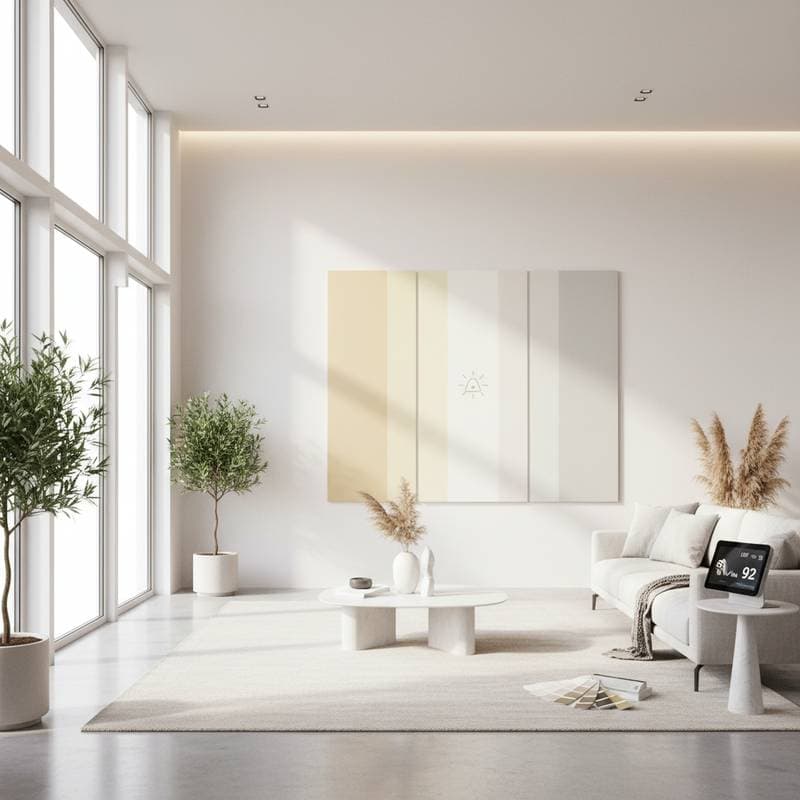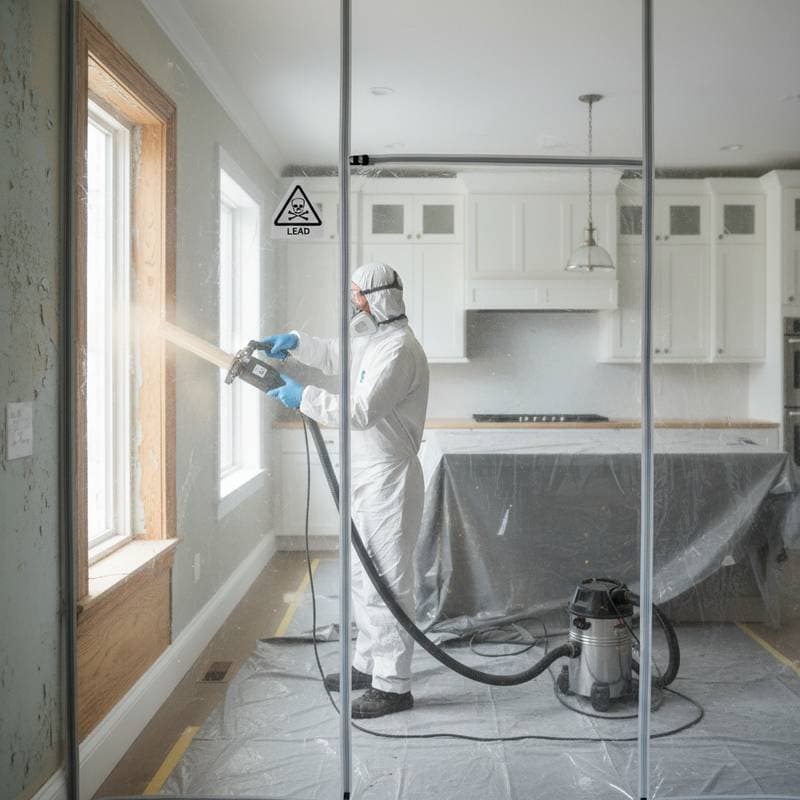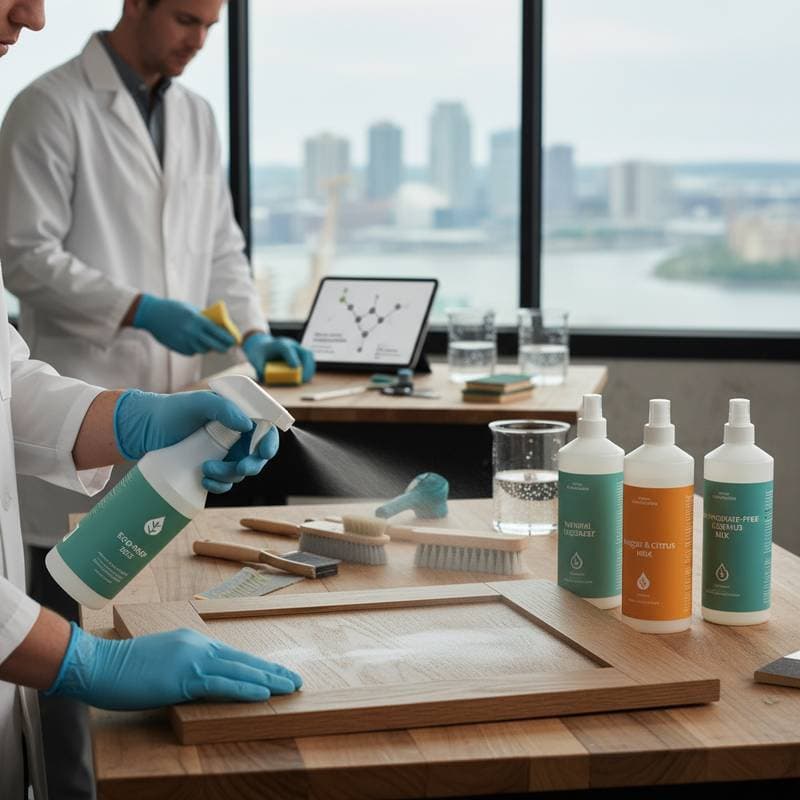Why Pressure Washing Damages Paint: Avoid the $800 Repair Bill
Homeowners frequently view pressure washing as a straightforward method to remove dirt from painted surfaces prior to repainting. The process removes visible grime rapidly, creating an illusion of readiness. However, high-pressure water can erode paint layers, force moisture into underlying materials, and compromise adhesion for new coats. Such errors transform initial savings into repair costs exceeding $800.
Knowledge of pressure washing effects on paint, wood, siding, and protective coatings empowers homeowners to sidestep these issues. Professionals identify scenarios where this technique succeeds or fails and recommend tailored preparation strategies. Proper execution preserves surfaces and extends the lifespan of fresh paint applications.
Project Cost Breakdown
Average Cost Ranges
- Basic repaint touch-up after pressure damage: $300 - $600
- Standard repaint of one exterior wall or section: $800 - $1,500
- Full repaint due to widespread adhesion failure: $2,000 - $6,000
What's Included
- Paint removal or sanding of damaged areas
- Surface cleaning and drying
- Primer and finish coat application
- Labor and materials for repainting
What Costs Extra
- Wood or siding repair caused by moisture intrusion: $150 - $400 per section
- Mold or mildew remediation after trapped moisture: $200 - $600
- Specialty primers for compromised surfaces: $50 - $120 per gallon
Factors That Affect Final Cost
| Factor | Cost Impact | Examples |
|---|---|---|
| Surface material | Higher for wood or stucco | Wood absorbs water, stucco can pit |
| Water pressure used | Severe paint loss at 2,500 PSI or more | Pressure too high removes protective coatings |
| Drying conditions | Extended drying time increases labor | Humid weather delays repainting |
| Paint quality | Better paints resist minor moisture | Low-quality coatings fail faster |
Safer Alternatives to Pressure Washing
Effective surface preparation cleans thoroughly while safeguarding integrity. Experts select techniques based on material properties and existing paint condition. These options minimize risks associated with water penetration and mechanical abrasion.
Common Alternatives
- Soft washing: Applies low-pressure water alongside biodegradable cleaning agents to dissolve organic growth and debris without stripping paint.
- Hand scrubbing: Employs brushes and mild detergents for precise cleaning, ideal for delicate areas like trim or textured surfaces.
- Chemical cleaning solutions: Targets specific contaminants on materials such as brick or vinyl, using pH-balanced formulas to avoid residue.
- Dry brushing or sanding: Eliminates flaking paint through gentle abrasion, preventing moisture entry into porous substrates.
Although these methods demand more time, they eliminate subsurface moisture that undermines paint bonds. Homeowners benefit from reduced incidences of surface gouging, wood splintering, or unintended discoloration.
Timeline Expectations
Preparation phases extend beyond initial cleaning to include essential drying and inspection steps. Excluding pressure washing adjusts the overall schedule modestly, yet yields superior durability. Patience in this stage averts premature failures.
Typical Surface Prep Timeline
- Assessment and cleaning: 1-2 days
- Drying period: 2-3 days depending on humidity
- Sanding and priming: 1 day
- Final painting: 1-2 days
Omitting drying invites adhesion problems as residual moisture migrates outward. Allocating extra days upfront secures adhesion and forestalls recurring maintenance.
Contractor Selection and Hiring Tips
Engaging skilled professionals minimizes preparation pitfalls and ensures compliance with best practices. Prioritize firms that emphasize methodical cleaning over expedited painting. Inquire about their protocols for surface treatment and moisture management.
What to Verify
- Licensing and insurance: Safeguards against liability for unintended surface harm.
- Surface preparation method: Encompasses cleaning, drying, and priming without high-pressure tools.
- References and reviews: Validates sustained performance from prior projects.
- Written estimates: Details labor, materials, and preparation distinctly.
Reputable contractors articulate the rationale for avoiding pressure washing on vulnerable surfaces. They outline dryness testing procedures and adhesion warranties to build confidence.
Quality Assurance and Inspection
A successful paint job exhibits uniform color, full coverage, and tactile smoothness. Indicators of inadequate preparation include blisters, peeling edges, or powdery residues. Systematic checks reveal issues early.
Focus inspections on:
- Window sills and trim, prone to water accumulation.
- Lower siding edges, susceptible to runoff.
- Horizontal elements like porch rails and steps.
- Areas adjacent to downspouts or irrigation sources.
Should defects emerge shortly after completion, notify the contractor without delay. Prompt assessment halts progression to extensive peeling or microbial growth.
Planning Your Project
Strategic planning mitigates pressure washing risks through informed choices. Allocate time for thorough drying, select vetted experts, and confirm surface readiness. This deliberate approach fosters enduring protection and cost efficiency for your home's exterior.
Frequently Asked Questions
1. What causes paint to peel after pressure washing?
High-pressure water infiltrates beneath existing paint, saturating the substrate and hindering new coat adhesion. As moisture expands during drying, it lifts the paint film from the surface. Failures initiate in localized areas and propagate rapidly without intervention.
2. How long should a surface dry before painting after cleaning?
Drying duration varies by material and environmental factors. Porous surfaces like wood or stucco require two to three days under dry conditions. Moisture meters provide objective readings to verify suitability for priming and painting.
3. Is soft washing safer than pressure washing for painted exteriors?
Soft washing proves gentler, employing reduced pressure and targeted solutions to eliminate dirt and mildew. This combination avoids paint erosion and subsurface saturation, particularly on sensitive features such as aged wood or fine trim.
4. How can I tell if my painter uses proper surface preparation methods?
Request a detailed description of their cleaning and drying routines. Professionals highlight non-abrasive techniques like hand washing, light sanding, or chemical treatments over high-pressure options. Their plans incorporate priming and moisture verification for reliability.
5. What should I do if paint starts peeling soon after a repaint?
Reach out to the contractor for an immediate evaluation. Such peeling signals residual dampness or contaminants from rushed preparation. Refrain from self-repair until experts determine if targeted fixes or comprehensive repainting suffice.
6. Why does improper surface prep cost so much to fix?
Remediation demands removal of failed layers, substrate drying, priming, and recoating, escalating labor and material expenses. Exterior projects amplify these costs due to access challenges. Proactive avoidance through sound preparation remains the most economical path.



